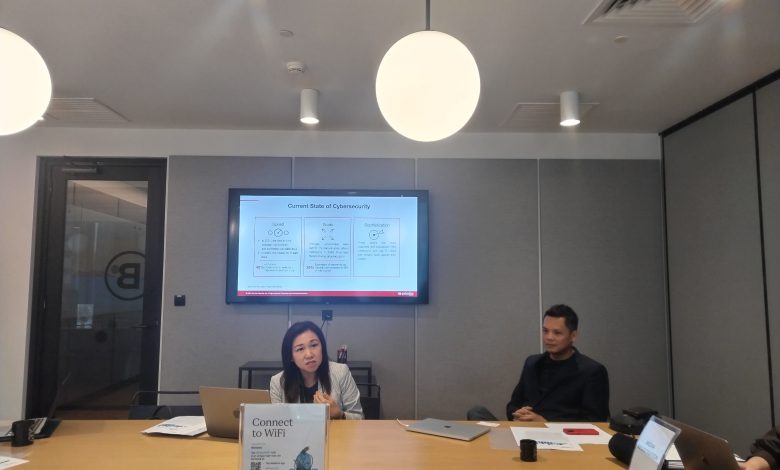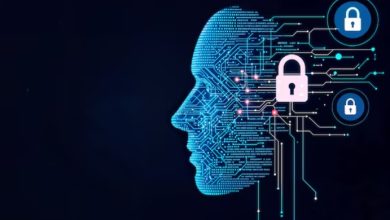Palo Alto Networks Report Exposes Shrinking Breach Windows and the Rise of AI-Fuelled Attacks

In the realm of cybersecurity, vigilance is the cornerstone of defence. But surprisingly, even the most prepared organisations can find themselves at the mercy of modern cyber threats, as highlighted by David Rajoo, Senior Systems Engineer Specialist at Palo Alto Networks.
 David recently shared compelling insights during a media briefing hosted by Palo Alto Networks at WeWork, Equatorial Hotel, Kuala Lumpur. The event centred on revelations from the “Incident Response Report 2024” crafted by Unit 42, Palo Alto Networks’ esteemed threat intelligence team. The report delved deep into emerging tactics utilised by cyber adversaries, providing a roadmap for understanding and mitigating evolving threats.
David recently shared compelling insights during a media briefing hosted by Palo Alto Networks at WeWork, Equatorial Hotel, Kuala Lumpur. The event centred on revelations from the “Incident Response Report 2024” crafted by Unit 42, Palo Alto Networks’ esteemed threat intelligence team. The report delved deep into emerging tactics utilised by cyber adversaries, providing a roadmap for understanding and mitigating evolving threats.
One alarming trend unveiled in the report is the accelerated timeline between data reconnaissance and exfiltration. David emphasised a stark reality: What once unfolded over days now transpires within a mere day or even hours. This compressed timeframe places immense pressure on organisations to fortify their defences and respond swiftly to potential breaches.
The Cybersecurity Arms Race
David pointed out that these consequences may be a direct result of threat actors leveraging the capabilities of AI and exploiting vulnerabilities in cloud platforms to orchestrate cyber attacks. Since its accelerated emergence in recent years, AI has exponentially amplified the scale, speed and sophistication of malicious activities.
Also in attendance at the briefing was Sarene Lee, Country Manager for Palo Alto Networks Malaysia, who further elaborated on this point. She discussed how threat actors now possess the capability to orchestrate large-scale phishing attacks by utilising publicly available AI models such as ChatGPT.
 Sarene explained how malicious actors exploit the natural language generation capabilities of these AI systems to churn out hundreds of convincing email messages en masse. Automating the generation process has enabled them to tailor each message to appear legitimate and personalised, thereby significantly increasing the likelihood of successful deception.
Sarene explained how malicious actors exploit the natural language generation capabilities of these AI systems to churn out hundreds of convincing email messages en masse. Automating the generation process has enabled them to tailor each message to appear legitimate and personalised, thereby significantly increasing the likelihood of successful deception.
With threat actors stepping up their game, Sarene emphasised the necessity for cybersecurity professionals to adapt their strategies to keep pace with evolving tactics. Otherwise, she likened it to “bringing a knife to a gunfight.” Therefore, cybersecurity professionals must also equip themselves with equally advanced tools and methodologies.
This underscores the urgent need for cybersecurity professionals to actively acquaint themselves with AI technology. Doing so will enable them to level the playing field with the threat actors they encounter.
Boosting Response Speed and Security
During the briefing, Sarene and David emphasised a crucial aspect: the paramount importance of the initial stages in a compromise, including discovery, confirmation, and investigation. The report findings clearly underscore the need for defenders to expedite these processes.
In light of this urgency, the report outlines key principles to enhance response speed and improve an organisation’s overall security posture:
- Preparation: Proactive preparation is key to staying ahead of attackers. By readying themselves to respond within hours of a compromise, organisations can thwart attackers before they execute their plans.
- Automation: Human security teams have limitations such as sleep and multitasking. Automation, especially when leveraging machine learning and AI, aids in sifting through alerts and highlighting those that demand immediate attention.
- Zero Trust: Adopting a zero-trust philosophy is crucial in limiting the impact of a compromise. By restricting the movement and activities of attackers, organisations reduce their power post-compromise, akin to limiting a thief’s movement within a building.
- Defence in Depth: A security strategy comprising layered defences and controls increases the chances of detecting attacker presence early. When combined with limited privileges from a zero-trust standpoint, it enhances the significance of meaningful alerts, enabling focus on attacker activity earlier in the attack lifecycle.
More Tools, More Trouble?
Sarene and David highlighted a crucial piece of advice that may resonate strongly with many organisations today: The need to consolidate their cybersecurity tools. Sarene noted that numerous organisations faced compromises due to an overabundance of active cybersecurity tools. David supported this observation by sharing insights about some Palo Alto Networks customers employing up to seven different cybersecurity tools simultaneously. Both emphasised the importance of consolidating cybersecurity tools for optimal efficiency and effectiveness.
The duo explained that an excess of cybersecurity tools often leads to overlapping and conflicting functionalities, causing confusion and inefficiency in monitoring and response efforts. These redundancies and conflicts not only increase complexity but also create vulnerabilities as resources are distributed across multiple platforms.
Additionally, managing a plethora of cybersecurity tools incurs personnel training and maintenance costs, diverting attention and resources from critical cybersecurity aspects such as threat intelligence analysis and incident response planning. The fragmentation of cybersecurity tools also hampers interoperability and data sharing, limiting an organisation’s ability to comprehensively and accurately correlate and analyse data.
The AI Advantage: A Collaborative Effort
Sarene and David concluded by highlighting the crucial role of AI in fortifying Malaysia’s cybersecurity posture. However, they acknowledge a gap in adoption, particularly within organisations that haven’t grasped the transformative power of AI for threat detection and prevention.
To bridge this gap, a two-pronged approach is needed. First, raising awareness through targeted education initiatives will equip businesses with the knowledge to value AI-powered security solutions. Second, fostering collaboration between industry, government, and cybersecurity experts can create a knowledge-sharing ecosystem that accelerates AI adoption. This collaborative environment will empower organisations to make informed decisions, invest in the right partnerships, and leverage AI to safeguard their digital assets effectively.
By embracing AI and fostering collaboration, Malaysia can solidify its position as a secure and thriving digital economy.



